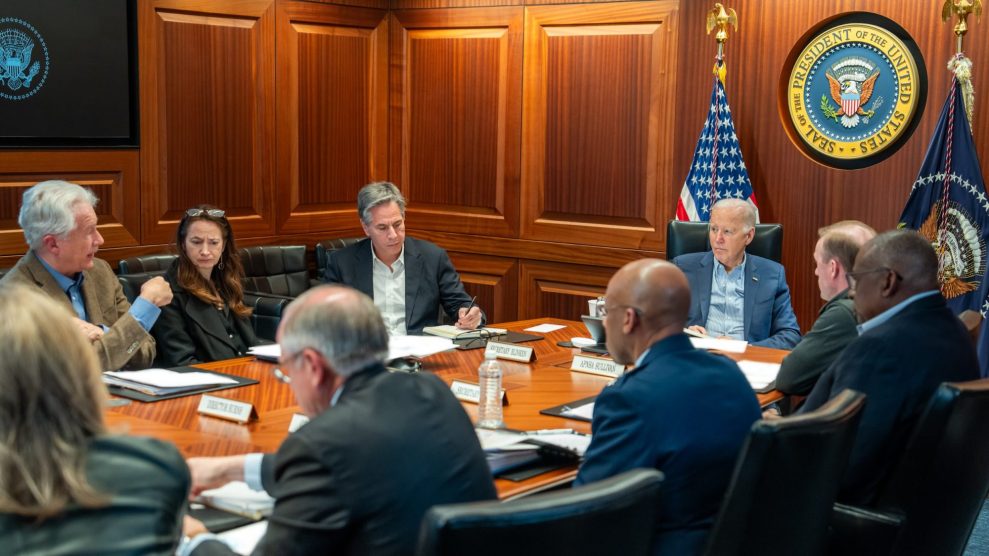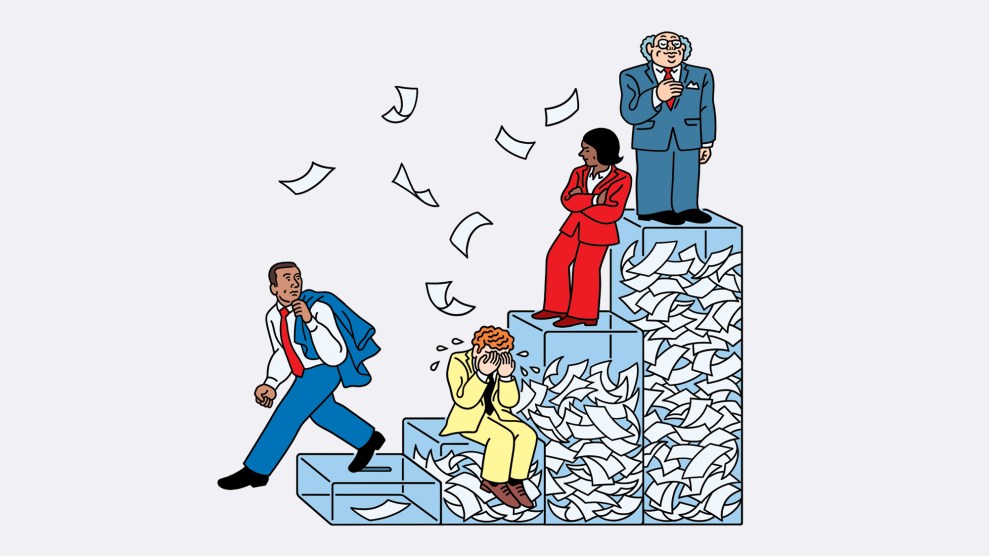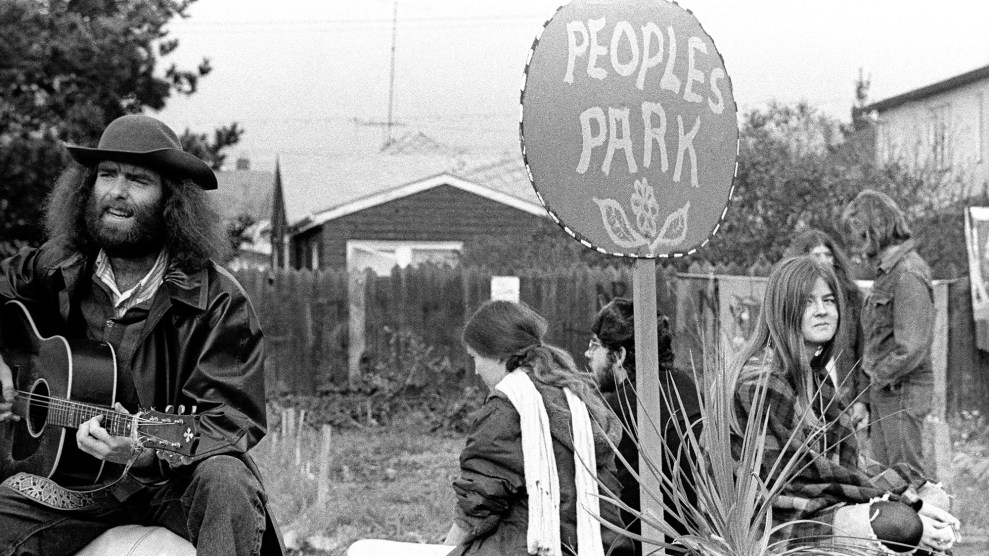
A guard tower at the US detention camp in Guantánamo Bay, Cuba, in 2016Maren Hennemuth/ZUMA Press
Last month, I took my first trip to the US military detention camp at Guantánamo Bay to visit Sufyian Barhoumi. As a military handler drove me and my colleagues from the Center for Constitutional Rights (CCR) down the winding road from the ferry landing to the camp, I marveled at the lush green hills and sparkling blue water around us. The serenely beautiful setting stands in stark contrast to the detention camp, which is jarringly ugly: Endless rolls of rusty barbed wire, layers of fencing enmeshed with opaque green cloth, cages with peeling paint, gravel pits where grass should be. A warehouse to store men we don’t know what to do with.
Guantánamo is a sprawling network of several smaller detention camps. Many of the camps, such as Camp Iguana, where children were held, are no longer in use. Currently, detainees are housed in two different camps. Fourteen “high value detainees,” who were interrogated at the CIA’s notorious “black sites” prior to being shipped to Guantánamo, are held in Camp 7. The rest, like Sufyian, are held in Camp 6. At Camp Echo, the site designated for client meetings, my colleagues and I are ushered into a tiny office. We submit our papers to a member of the Privilege Review Team (PRT), who must approve and stamp them before we can bring them into our meeting. The detainees and anyone who interacts with them are subject to a gag order. Very little information is allowed in, and very little is allowed out.
Attorneys must obtain security clearances to meet with their clients because everything the detainees say is presumptively classified, even now, a decade and a half after they were brought here. The PRT must ensure that their utterances don’t pose a threat to national security before they can be declassified and shared with the public. I applied for my clearance to see Sufyian a few months before I graduated from law school; it took nearly 10 months to process.
When we are led in to the meeting area, Sufyian stands to greet us. We quickly ease into conversation. When he smiles, he wrinkles his nose and reveals a wide grin through his salt-and-pepper beard. Sufyian is an avid soccer player, and when I ask about his reputation as the best striker in Guantánamo, he smiles sheepishly and looks at the floor. He explains that now, at 43, he is getting too old to play. With fewer men left in Sufyian’s camp, they can no longer field a full team for a match.
Sufyian, who is originally from Algeria, has been detained without trial at Guantánamo for 15 years. As a young man, he lived in Spain, France, and England, working as a farm worker and a street merchant. Sufyian was captured in March 2002 in Faisalabad, Pakistan. Military prosecutors charged him three times with allegedly training would-be insurgents on how to make improvised explosive devices , but each time those charges were dropped for lack of evidence. In 2012, tired of waiting for the government to decide what offense he had committed, Sufyian offered to plead guilty to anything in order to get a release date.
Finally, in August 2016, Sufyian was cleared for transfer by the Periodic Review Board, an administrative body comprised of officials from six national security agencies who review detainees’ eligibility for release. It was expected that he would soon be sent back to Algeria to be reunited with his mother and siblings. Sufyian was so sure of his impending departure that he distributed his possessions, including his prized wristwatch, as farewell gifts to his fellow detainees.
But bureaucratic recalcitrance cost Sufyian his freedom. In the final week of Barack Obama’s presidency, CCR filed an emergency motion asking the D.C. district court to waive congressional restrictions on detainee transfers (such as the requirement that the Secretary of Defense certify that no released detainee would commit any harmful acts) and direct the government to release Sufyian. Despite the Obama administration’s authority to bypass the certification requirement and incoming President Donald Trump’s promise to halt all transfers from Guantánamo, the government opposed CCR’s motion. Ultimately, the court sided with the government. Sufyian, along with 40 other men, 4 of whom are cleared for release, are currently stranded in Guantánamo.
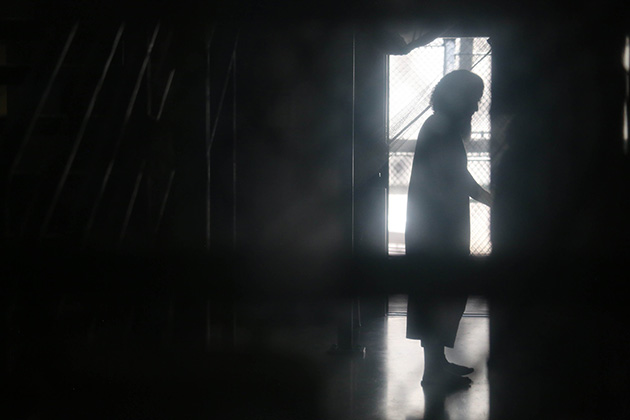
An unidentified detainee inside Camp 6 in January 2017.
Michelle Shephard/The Toronto Star/ZUMA Wire
The erasure of Guantánamo from our public consciousness, mirrored by the prison’s physical deterioration, is unsettling. During the Bush administration it became synonymous with torture and lawlessness, but the Obama administration whitewashed the brutality of indefinite detention through a steady flow of human rights rhetoric and legalisms. President Obama claimed he wanted to shutter the prison but was unwilling to take the political risk of bypassing an obstructionist Congress in order to do so. Now, President Donald Trump has not only said he will keep Guantánamo open, he has promised to “load it up with some bad dudes.”
Responsibility for the failure to close Guantánamo lies with all three branches of government, but the ultimate enabler has been apathy. Federal courts, in particular, have been complicit in Guantánamo’s continued operation by abdicating their role as a check on executive power. The jurisprudence that has crystallized in the Guantánamo detainees’ cases is so deferential to the government that it ensures no detainee may be set free as the result of a court order. Beyond embodying the failure of the rule of law, Guantánamo is a testament to what three years of legal education did not teach me: the powerful can twist the law beyond recognition to validate unjust outcomes. There is no other way to explain why Sufyian is still detained today.
When we ask Sufyian how he is doing, given the new political reality, he points towards the ceiling and makes a gesture of supplication. “Alhamdulillah,” he repeats several times—praise be to God. His tranquility and sense of perspective are remarkable. When he talks about his future, it is evident that he is drawing upon a reservoir of strength and optimism he has cultivated during his years in detention.
With Ramadan approaching, Sufyian requests various treats to give his fellow detainees as they break their fasts—chocolates, Nutella, strawberry Nesquik. Ultimately, though, the conversation always comes back to a replacement for watch he gave away.
Legal visits like this one have become a weird formality. Both attorneys and detainees are acutely aware that the law will not lead to freedom. The promise of Boumediene v. Bush, the landmark 2008 Supreme Court ruling that granted Guantánamo detainees the right to challenge the legality of their detention in federal court, has faded. On the rare occasions where detainees’ habeas corpus petitions have been granted, they have been reversed on appeal. When the government has not appealed unfavorable rulings, it has dragged its feet in securing transfers, causing technically free men to languish.
The importance of pursuing legal challenges lies in creating opportunities for detained men to tell their stories. Much of the shift in narrative that occurred in the late Bush and early Obama years was the result of lawyers presenting detainees to the world as human beings deserving of basic dignity. At Guantánamo, the role of the lawyer is as much storyteller as it is litigator.
There is something odd about standing in Guantánamo’s Naval Exchange grocery store deciding whether to buy white or whole wheat pasta, or walking through the gift shop with its displays of shot glasses and stuffed toys, while being so close to men who have had years of their lives stolen from them. As a Muslim woman who grew up in post-9/11 America, Guantánamo will always be a place of orange jumpsuits, black hoods, and dog-kennel cages—a place where Muslim men and boys were sent to be interrogated, tortured, and imprisoned. It is the foundation on which the US government constructed its “Global War on Terror” against mythical superhuman Muslim terrorists. This is the Guantánamo that recklessly expanded presidential power and spurred the blockbuster Supreme Court cases we dissected in my Con Law class. I expected it to be more imposing, the sense of injustice more palpable.
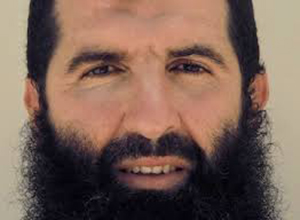
Sufyian Barhoumi has been held at Guantánamo since 2002.
Every aspect of our visit—taking the ferry across the bay to the prison each morning, eating lunch at Subway for four days straight, frantically shopping at the Naval Exchange for items requested by our clients—feels sterile, routine, mechanic. The layers of bureaucracy separating attorney from client, from the security clearance down to the button we must press to summon a guard to let us out of the meeting room, drain any sense of normalcy from what should be a basic human interaction.
The only time I felt fully human while at Guantánamo was when meeting with Sufyian. When Sufyian told us about his friend, an ailing 71-year-old detainee from Pakistan, or when he spoke with sadness and hope about his desire to see his mother again, I felt a jolt of emotion that reassured me that I hadn’t yet succumbed to the hollowness of this place.
When our meeting time ends, Sufyian stands up, as if we are his guests and he is going to escort us to the door. His left leg is chained to the floor, so he shuffles a few inches and we say our goodbyes. “See you—what’s the Urdu word for ‘tomorrow’?” Sufyian asks me, picking up on an earlier part of our conversation in which he showcased his budding knowledge of Urdu after learning that it was my native tongue. “Kal,” I say. “Hum kal milengay.” We will meet again tomorrow.
The windowless armored van that will transport Sufyian back to his cell is waiting outside. When the detainees are brought to and from the meeting area, they are blindfolded, shackled, and escorted by a group of guards in full gear. While the entire spectacle is ridiculous, I don’t understand why the men are deprived of catching even a glimpse of the beautiful island on which they are held captive. But then, the answer behind the many absurdities of Guantánamo is usually “national security.”
On our last day at Guantánamo, as we ride the yellow school bus making endless loops around the base, we see a C-17 taxiing on the runway. My colleague remarks that, prior to Trump’s inauguration, C-17s were a sign of hope. Whenever detainees were about to be transferred, they would be brought to the airport—in the middle of the night, blindfolded and shackled just as when they first arrived—and then put into a plane like this one.
I think of the watch I’ll bring Sufyian on my next visit. A strange request for a man who is being detained indefinitely at a prison where time has been rendered meaningless. Amid this crushing uncertainty, I try to latch on to Sufyian’s insistence that, when it is meant to be, he will be free. As I watch the C-17 take off, I dare myself to imagine the day Sufyian will be flying somewhere far away to resume the rest of his life.






